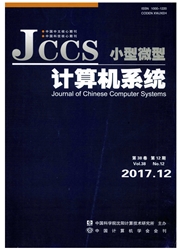

 中文摘要:
中文摘要:
定位技术是无线传感器网络的基础理论和关键技术之一.在实际应用中,一些信标节点在部署以后其位置由于各种原因而会发生漂移,由此就使得依赖于这些信标节点来定位的其他节点将无法准确定位,或者产生很大定位误差.本文针对信标节点产生漂移情况下的节点定位问题,提出了一种基于区域划分的信标节点移动检测算法(AD-BMD),在区域划分的基础上,通过两次判定过程将移动的信标节点检测出来,并为每个信标设置了坐标可信度值.为合理利用移动的和未移动的信标节点,提出一种基于信标移动检测的信标择优定位算法(BMD-BOS),通过合理选择信标节点来对其它未知节点进行定位.实验结果证明,AD-BMD算法具有很高的检测正确率和较低错误率,检测效果好于LB和SSV方法.BMD-BOS算法的定位精度远远高于没有进行移动信标检测的定位算法(N-BMD)和将移动信标丢弃的定位算法(D—BMD).
 英文摘要:
英文摘要:
Localization is one of the basic theories and key technologies in wireless sensor network (WSN). However, in practical applications, the locations of some beacons would change due to various reasons after deployment, which leads to other unknown nodes rely on these beacons can not been accurately located. In order to solve the localization problems with beacons movement, this paper proposed an area division based beacon movement detection algorithm ( AD-BMD ), through two judgment processes to determine which beacon have moved, and set a coordinates confidence value for each beacon. In order to use moving beacons and unmoving beacons more reasonably, this paper also proposed a beacon movement detection based beacon optimal selection localization algorithm (BMD-BOS), through selecting beacons reasonably to calculate the position of unknown nodes. Experiment results show that ADBMD has high correct rate and low error rate. Compared with LB and SSV, AD-BMD has better performance. The localization accuracy of BMD-BOS is much higher than N-BMD's and D-BMD's
 同期刊论文项目
同期刊论文项目
 同项目期刊论文
同项目期刊论文
 期刊信息
期刊信息
